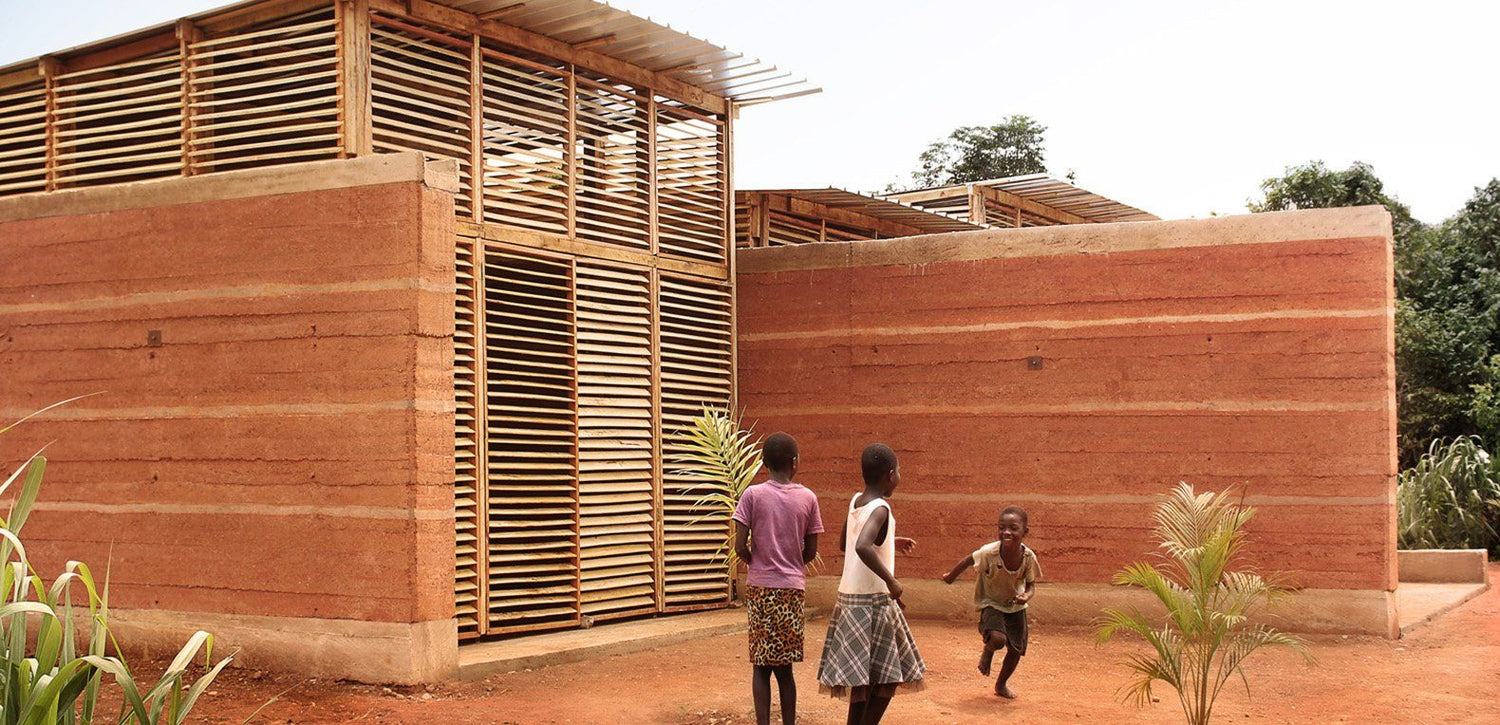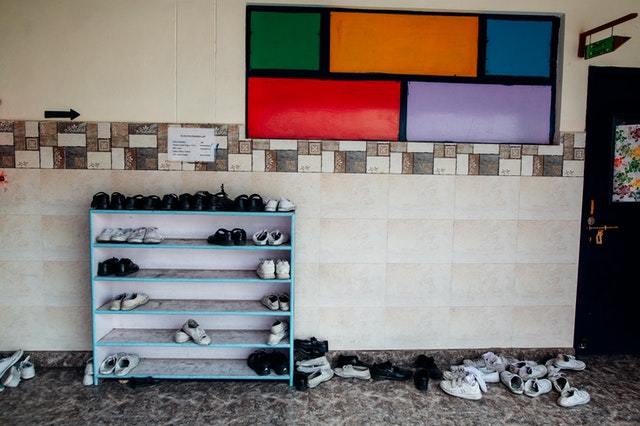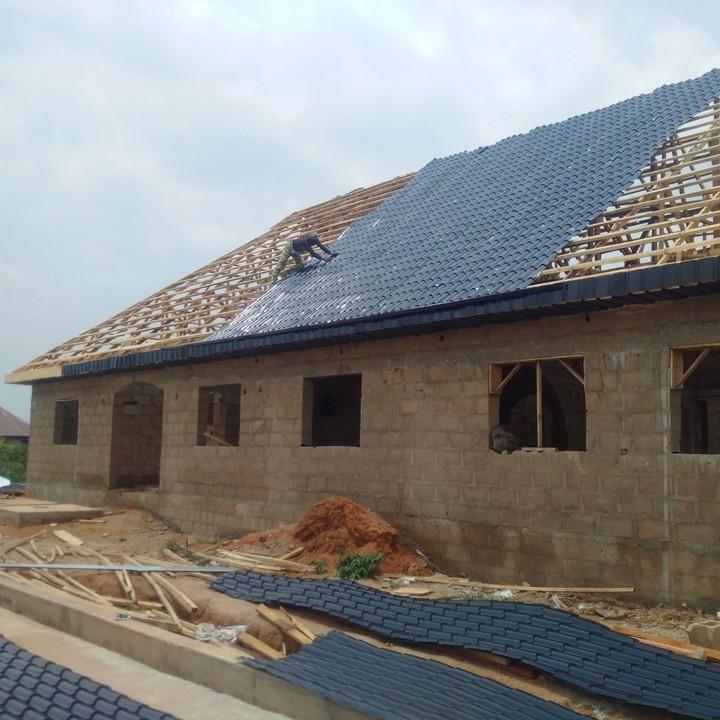
Shelter has been an important factor for survival since the earliest days of man. In recent times, it now exists in form of buildings including the houses we live in, schools, and workplaces.
But unfortunately, due to the rising demand for accommodation and other basic amenities in today’s world, the demand for the construction of more buildings have contributed significantly to the level of greenhouse gases that exist in our atmosphere.
As most people are already aware, these greenhouse gases are not friendly for the planet's eco-system and are the major factors that contribute to global climate change.
This is why most building construction experts now advise on the use of eco-friendly or recycled materials for construction works. The materials increase energy efficiency and reduce the emissions of greenhouse gases, thereby reducing the impact of climate change on humans and the environment.
The recent change in global climate has brought about a global trend in the use of eco-friendly materials for construction and building remodeling.
What are Eco-friendly Building Materials?
Eco-friendly construction materials are materials and products designed to have the least ecological impact on humans and the environment. They originate mostly from the available recycled materials like bamboo, rocks, and recycled plastic.
The use of eco-friendly construction materials is now very common, especially in developed countries. This is not only because they cause less havoc to the environment but also because they are durable when compared to non-eco-friendly materials.
The process of choosing an eco-friendly construction material is not very easy. It requires putting into consideration different factors like the durability of the material and the source of the material (whether or not it is locally sourced and requires less energy to be transported to the construction site).
Top 10 Eco-Friendly Construction Materials
The following are some of the most popular and durable eco-friendly construction materials you can use for your building during construction. Whether you’re planning to construct a new building or trying to renovate an old one using eco-friendly materials, this article will guide you on the right materials to choose.
1. Bamboo

Bamboo is a strong fiber that’s rich in perennial grass and is available in almost all continents of the world, except Europe and Antarctica.
Conventionally, the use of bamboo as a building material is mostly associated with regions of South Asia and South America because the region's climate is favorable for its cultivation. It is also used in other parts of the world for the construction of houses, bridges, structures, and scaffolding.
Bamboo is an eco-friendly choice of material for construction because it is a renewable form of material that grows fast and is easy to cultivate. It is also lightweight and strong, which makes it useful for various kinds of construction work.
2. Recycled Plastic
Plastics are everywhere; they’re used heavily by most manufacturing industries to package products.
However, most people don't realize that plastics won’t be eco-friendly if they aren’t recycled properly. This is because they don't decompose easily. And this might eventually cause a large quantity of plastic waste to end up in the ocean and pollute marine life. One solution to this problem is to always recycle plastic.
When it comes to building construction, recycled plastic can be utilized by blending it with virgin plastic (unused plastic) to produce new plastics that can be used to make polymeric timber. The timber is used in the production of picnic tables, fences, and other building materials.
In some cases, polymeric timbers can serve as a good replacement for real timber and be pretty useful to help in limiting deforestation or the cutting down of trees.
3. Rammed Earth

Image credit: masterbuildafrica.com
This is an ancient construction technique that involves the use of raw materials like lime, chalk gravel, or earth for the construction of foundations, floors, walls, and so on. It is a technique that is mostly associated with regions like ancient China but can still be used in modern times due to its level of sustainability.
The process of making rammed earth involves compacting a mixture of damped soil with the necessary proportion of clay, sand, gravel, and stabilizer. Rammed earth materials are durable and composed of available materials that can easily be found around us.
4. Straw Bales
Just like the name suggests, straw bales are a building material made from straws of plants like rice, wheat, rye, and oat. When it comes to building construction, straw bales are mostly used as structural elements or building insulation.
The origin of straw bales can be traced back to the ancient Africans since the early stone age. It has also been used by the Germans for construction work for over 400 years. They are also naturally very good insulators with non-toxic qualities.
Straw bales are cheap, natural fire retardant, and made from the by-product of food production.
5. AshCrete

Image credit: knightlab.com
When you’re looking for an eco-friendly material that can serve as an alternative to conventional construction materials like concrete, one common option is ashcrete.
AshCretes are made from fly ash — a fine grain powder derived from burnt coal. Fly ash can be used as a direct replacement for cement due to its ability to produce strong and durable concrete.
AshCrete is highly durable and is produced from the by-product of coal — a very common renewable source of energy that’s widely used in most countries of the world.
6. Wood
Wood is a common construction material that has been in use for thousands of years. Historically, wood is the second most popular building material (with the first being stone) and has been heavily used in the construction of many ancient structures.
Wood comes in various textures, shapes, and sizes and is quite easy to work with. It can be used for various things like supporting structures, roofing, furniture, decorations, and so much more.
It is very popular, available, cheap, non-toxic to the environment, and can easily be recycled.
7. Cork
Cork can be classified as a less known but highly sustainable building material.
It is commonly used in the wine bottling industry because of its nature of being a non-toxic, recyclable, renewable, and water-resistant material.
Recently, the demand for cork as a building material is now on the rise and it is being used in various aspects of building construction like flooring, external filling, rigid insulation, and interior décor.
One of its major ecological advantages is its mode of production. It is produced from the scrapped bark of an oak tree and can be cultivated without causing any harm to the tree.
8. Ferrock

Image credit: pbs.org
If you’re looking for a more affordable, stronger, and more flexible alternative to concrete, then you can use a material like ferrock.
Ferrock is derived from largely iron-rich ferrous rocks, which are mostly mixed with recycled materials like steel dust. It was discovered and patented by David Stone.
The initial discovery of ferrock happened during a failed experiment while Stone was doing his Ph.D. at the University of Arizona. It is one of the newly discovered construction materials and it's very ecologically friendly due to its ability to trap carbon dioxide (CO2) as part of its drying and hardening process.
9. HempCrete
HempCrete (also known as hempline) is a bio-composite material derived from the mixture of hemp hurds (a by-product of hemp fiber) and lime. It is used in building constructions for producing construction materials and insulation.
HempCrete has been used for the construction of insulating infill walls in France since the early 90s. It is lightweight, strong, and lacks the bristliness of traditional construction materials like concrete. This makes it ideal for building construction in earthquake-prone areas.
Due to its durability and eco-friendly nature, the demand for hempcrete is gradually growing. Although, it is currently not yet available in all markets.
10. Mycelium

Image credit: interestingengineering.com
Mycelium is one of the newly-researched materials that have great potentials and usage in the construction industry. It is derived from mushrooms, which can be easily grown on the composite waste of agricultural materials.
It was initially discovered by Ecovate — the same company that discovered mycelium wine packaging.
The use of mycelium as a building construction material is still developing, but it has a very great potential of being a direct replacement for traditional materials like concretes.
This is because it is derived from mushroom and is an easy-to-grow ecologically friendly material known to be very durable and fire-resistant.
Conclusion
The world climate is rapidly changing as we know it, with some studies showing that construction-related activities contribute to about fifty percent (50%) of climate change.
It is, therefore, advisable that we use only eco-friendly or renewable materials for construction work when possible. This is to reduce the negative impact of climate change on the environment.






2 comments
cullqlfiuy
Muchas gracias. ?Como puedo iniciar sesion?
vykcnueimq
Muchas gracias. ?Como puedo iniciar sesion?
Leave a comment
This site is protected by hCaptcha and the hCaptcha Privacy Policy and Terms of Service apply.